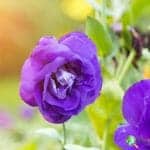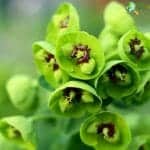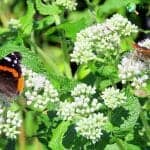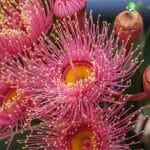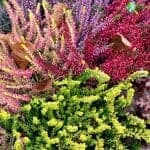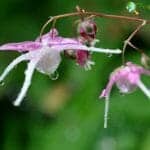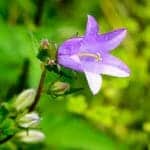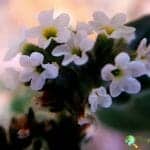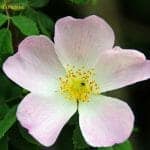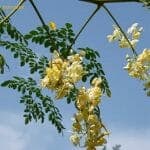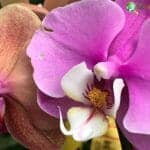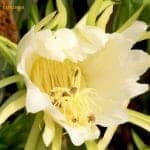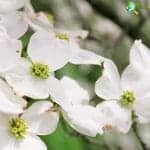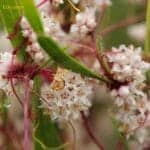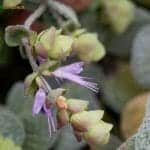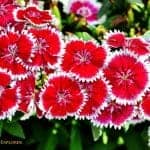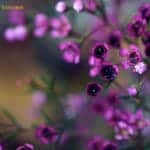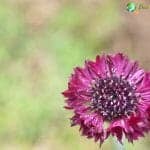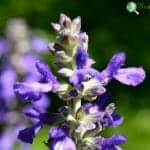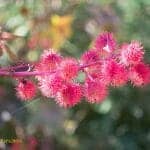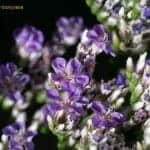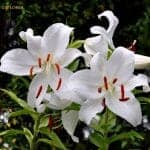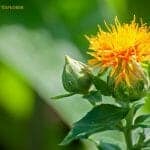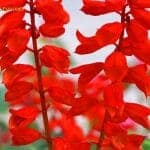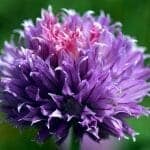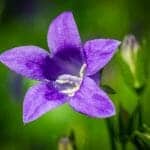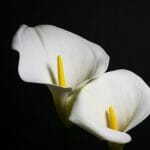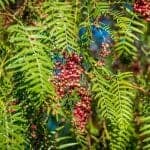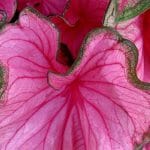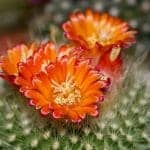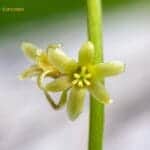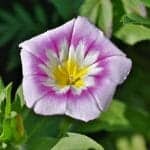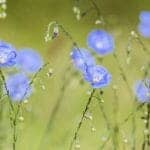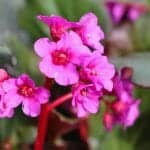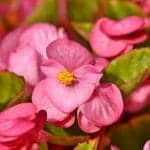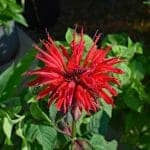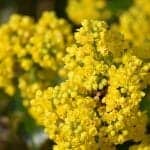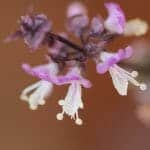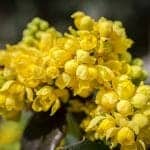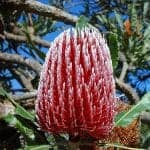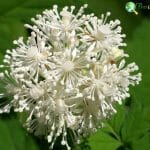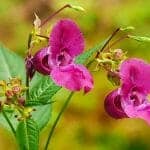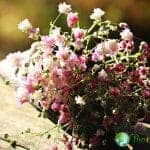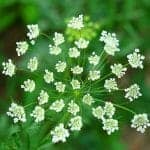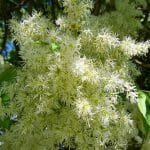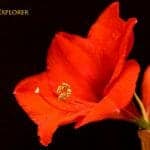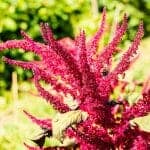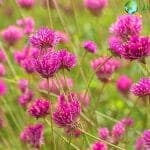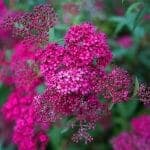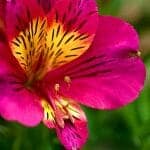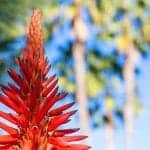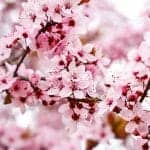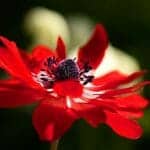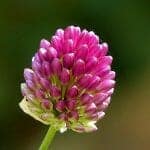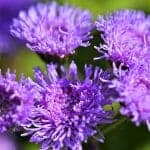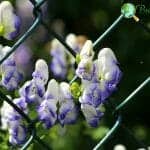p flower - search results
If you're not happy with the results, please do another search
Eustoma grandiflorum
Often preferred by flower designers when a classy flower is required for an arrangement, Eustoma grandiflorum is the epitome of a versatile and glamorous flower. The tousled petals and elegant buttons are available in various colors. They are available in different colors: pink, purple, blue, and white, as well as two-tone combinations of these shades.
Euphorbia
Euphorbia, commonly known as the crown of thorns, is a succulent, woody shrub with light green fleshy leaves, discrete flowers in racemes that are pointed by striking bracts in the shape of yellow or red petals. Euphorbia is a genus of over 1,600 species in the Euphorbiaceae family.
Eupatorium
Eupatorium perfoliatum is a perennial herbaceous shrub that forms clumps of small white blooms in late fall and summer. The Eupatorium genus belongs to the Compositaefamily in the primary group of flowering plants.
Eucalyptus
Known for their minty scent and as a filler in cut flower bouquets, eucalyptus plants can make showy annuals and stunning potted plants as well. The colors of the flowers are pink, white, and red.
Erica
Erica spp. is an evergreen shrub that hardly reaches one meter in height. However, Macaronesian and Mediterranean varieties can reach a height of more than 5 meters. These flowers vary in color from white to violet and pink.
Epimedium
A delightful woody addition, the Epimedium plant is part of a constantly growing family of highly-valued perennials. The Epimedium genus belongs to the Berberidaceae family with about 130 known varieties and species. It has large yellow/pale-pink spider-shaped flowers with a long spur (1 3/4" in diameter) appearing in spring bloom.
Epigaea
Epigaea is a native forest shrub in the Ericaceae family that develops as an evergreen carpet in forests and peaty clearings. Epigaea is native to eastern North America and is the only member of the genus. The blooms of the Epigaea are dark pink, pale pink, or white.
Enchanter’s Nightshade
The lovely Enchanter's Nightshade (Circaea lutetiana) is a plant native to the United Kingdom that appears weak and tender but can be a pesky weed once it establishes itself in the garden. Its small flowers are pinkish-white with 2 strongly serrated petals.
Eglantine
Eglantine is a species of rose, Rosa rubiginosa, commonly referred to as Sweet Briar. The genus Rosa consists of 20 to 30 species and subspecies of flowering plants. Named after its numerous hook-shaped thorns, the shrub bears many 5-petal flowers tinged white to pink within, with a central raceme of yellow stamens.
Drumstick
The drumstick tree (Moringa oleifera) is so named because of its long pods that look like drumsticks. The flowers of the drumstick plant are yellowish-white, around 2 cm across, with 5 sepals and 5 petals.
Dragon’s Tongue
The dragon tongue, also known as Hemigraphis repanda, Ruellia repanda, Waffle plant, and Dragon's breath, belongs to the family Acanthaceae and is native to India and Malaysia. It brings color to every corner and is one of the best options for beginners. The vivid and bright white flowers contrast beautifully with the earthy foliage.
Dragon Root
Dragon Root (Arisaema dracontium) is native to eastern North America and belongs to the Arum family. There are approximately 170 recognized species of Arisaema today. e greenish-yellow flowers are surrounded by a green mantle called a spathe.
Dogwood
Dogwood (Cornus florida) shrubs and trees offer a spectacle of incomparable beauty in all four seasons. The primary attraction is the appearance of showy pink or white flowers that herald spring. Dogwood flowers are usually white, but some varieties produce pink, pale red, or yellow flowers.
Dodder
Dodder (Cuscuta cephalanthi) belongs to a genus of over 200 species of obligate air-parasitic plants in the Convolvulaceae family.Dodder flowers appear in greenish-yellow or white clusters.
Dittany of Crete
Dittany of Crete has long been a relatively unknown herbaceous plant. But ever since Joanne K. Rowling's Harry Potter Magical Apprentice mentioned Dittany as a magical herb, the medicinal herb and spice have been in the public spotlight. Dittany of Crete produces purple to pink flowers during the flowering period.
Dianthus
Native to Africa, Asia, and Europe, Dianthus, also known as pinks, is prized for its bluish-green, grass-like foliage and lush, star-clear, and often pungent flowers. Dianthus flowers are mainly in shades of white, red, salmon, and pink. The foliage is thin and sparsely distributed on thick stems.
Dahlia
Dahlia is available in various shapes, colors, and sizes, which makes it popular with florists and gardeners. Dahlias, along with sunflowers and daisies, belong to the Asteraceae family. Although more than 20,000 species in this family, Dahlias, Mexico's national flower, has become one of the most popular competition flowers today.
Chamelaucium
Also known as Geraldton Wax, Chamelaucium uncinatum is a dense but sprawling shrub that can grow from 2 to 6 feet in height and width. It's among the most popular Australian flowers. The blooms are small with 5 waxy petals, and they come in purple, pink, and white varieties.
Centaurea cyanus
Centaurea cyanus is an annual flower native to Europe that escaped gardens and became naturalized across southern Canada and the United States. Also known as garden cornflower and blue bottle, Centaurea cyanus belongs to the Asteraceae family. The bluish-purple (often pink to white) flowers bloom on stems 1 to 3 feet tall from late spring through summer.
Catmint
As one of the exotic perennials of the flower world, catmint (Nepeta cataria) is very versatile and easy to grow. The dark purple flowers explode in early summer for a spectacular display that can last for quite some time. Since this plant appears in muted colors, typically purple/blue flowers on a cool gray-green, catmint is easy to mix and match with other annuals and perennials without clashing.
Castor Bean
Castor flowers are generally available in yellow, pink, and red. The blooms don't have petals and aren't particularly visible. The 3 distinctive, star-shaped scar lobes of the female blooms are bright red with pinnate branches.
Caspia
Caspia (Limonium sinuatum) is a perennial or annual herbaceous plant that originates from Central Asia and the Mediterranean meadows. Its flowers have white petals and calyces that come in shades of purple, yellow, pink, white, or lavender, the latter being known to hold their color very well.
Casa Blanca
Casa Blanca flowers are predominantly whiteto pinkto purple-red, and some are golden yellow in color. Their medium texture blends in with the garden. Casa Blanca belongs to a genus of approximately 100 species of herbaceous and bulbous perennials native to South America, North America, and Europe.
Carthamus
In shades of orange and yellow, Carthamus flowers last up to 7 days. It's clearly an annual plant that belongs to the sunflower family (Asteraceae). The Asteraceae or Compositae family is large, with more than 20,000 different species.
Cardinal
Cardinal flowers grow well as solitary plants in natural landscaping, mixed flower beds, and borders. The genus Lobelia includes 60 different species of flowers, primarily blue bell-shaped flowers in loose clusters or spikes.
Chives
Chives are a small perennial plant from the Amaryllidaceae family and are related to the onion. Chives are cultivated as ornamental plants because of their attractive flowers and as a herb because of their flavorful leaves. The genus Allium has over 300 species.
Campanula
As a roadside flower that is now spreading in many regions of the world, the Campanula flower is a striking purple or blue addition to your meadow. This plant is a genus of approximately 500 species of plants in the Campanulaceae family native to the northern hemisphere's temperate regions.
Calla Lily
Calla Lily flowers are unprecedented and recognizable, featuring a single petal that wraps around to make a charming statement. Calla lilies are generally white, but other colors of Calla Lilies are black, orange, purple, green, pink, and yellow.
California Pepper Berry
Although its name can be confusing as to its origins, the California Pepper Berry surprisingly originates from Peru. These pink berries aren't really used for pepper in yet another misnomer, but only for their decorative charm. The flowers of the California Pepper Tree are yellowish-white in color and grow profusely in hanging axillary clusters.
Caladium
Caladium, with its heart-shaped leaves in different colors of white, pink, and red, are affectionately known as Angel Wings and Heart of Jesus. These lovely tropical foliage plants grow from tubers native to South America's Amazon Basin.
Cactus
Cactus is a flowering plant from South and North America. There are more than 2,000 species of cacti in the world, some very common and others very rare that they are almost critically endangered. Cactus comes in various unique colors, sizes, and shapes, with all sorts of beautiful flowers.
Black Bryony
Black Bryony is a climbing plant that reaches around 2 to 4 meters in height. The flowers have a bell-shaped perimeter and are small, greenish-yellow in color, and regular. Bryony is a species in the yam family Dioscoreaceae.
Bittersweet
The Bittersweet plant is a staff vine and belongs to the genus Celastrus, which belongs to 30 species of shrubs and vines. These flowers are cultivated in America, Africa, Australia, and the eastern region of Asia.
Bindweed
Bindweed (Convolvulus arvensis) is a perennial herbaceous climber from Eurasia. This plant is found in most regions where it was accidentally introduced as a contaminant in horticultural and agricultural seeds.
Big Flax
When people think of Big Flax, they generally do not think of it as a flower; they see it more as a seed. However, the Big Flaxseed has to emanate from something. Big Flax belongs to the Linaceae family, and there are around 200 species in the genus Linum.
Bergénia
Bergenia is a flowering plant belonging to a genus of around 10 species. This plant belongs to the family of Saxifragaceae. The flowers can range from dark purple to bright pink. The plants are 12 to 24 inches tall and are grouped into an inflorescence.
Begonia
Begonia is a beautiful flowering plant that is steeped in exciting and rich history. They are fabulous to any backyard and will gladly grow in hanging baskets, flower beds, pots, and more. The Begonia plant belongs to a genus with about 1,300 species.
Bee Balm
Bee Balm is the ideal plant for pollinators. It is sometimes grown in medicinal and edible gardens for its ability to attract butterflies and bees. Native to North and South America, the Bee Balm played a vital role in indigenous ceremonies before the arrival of European settlers. Now it's a pretty cosmopolitan plant.
Basket-of-Gold
Basket-of-Gold is nicknamed because of its beautiful yellow flowers. It is an evergreen perennial from the Brassicaceae family, native to Europe and Asia. This flowering plant is synonymous with the Alyssum saxatile plant and is among the most resilient flowering plants.
Basil
Among the numerous Basil varieties, sweet basil or Ocimum basilicum is the most frequently grown. Whether purple, sweet, citrus-lemon, or spicy Thai Basil, Basil leaves contain essential oils responsible for their unique taste nuances.
Barberry
If you find a dicotyledonous plant with holly-like evergreen leaves and flower parts in multiples of three, it is possibly one of the Barberry family. Worldwide, there are approximately 570 species and 15 genera in the Barberry family.
Banksia
Banksia is a genus of about 100 species in the Proteaceae plant family and is native to Australia and South Africa. These popular garden plants and Australian wildflowers are easily recognized by their characteristic fruity "cones" and buds as well as flower spikes.
Baneberry
Baneberry flowers are ideal for cool, shady places; the thread-like Baneberry flowers bring a vacation-inspired look to your backyard. Two (2) species of Baneberry are common in North America: Actaea rubra (Red Baneberry) and Actaea pachypoda (White Baneberry).
Balsam
Balsam flowers were introduced to western Asia in the early 20th century. Balsam flowers continued to be popular during World War II. Even though impatiens are and remain popular, many horticulturists, both professionals, and amateurs are bringing these flowers back.
Baby’s Breath
Baby's Breath, also known as Gypsophilia, is a bushy, branching plant with small, delicate flowers on long, thin stems. It's native to Eastern and Central Europe. It belongs to the genus gypsophila and contains around 35 plants.
Ammi majus
Ammi majus may not be an actual "royal", but the royal appeal of this flower is undeniable. Treasured by designers for its airy, lace-like, and delicate charm, Ammi includes a group of perennials that are often misconstrued for their more "royal" cousin (Queen Anne's Lace or Daucus carota).
American Ash
Ash trees are spectacular trees with great cultural significance and mystical beliefs in various aspects of human life. Ash is generally known as the "Tree of Life" as it's believed to be the foundation of humanity from the past.
Amaryllis
The pretty amaryllis flower, often given away at Christmas, is often seen as a sign of festive joy. While this is true, this flower has many other meanings as well. The Amaryllis flower is available in various shades, including purple, orange, white, yellow, and red.
Amaranthus hypochondriacus
Known commonly as Prince's Feather or simply Amaranth, Amaranthus hypochondriacus is a striking ornamental and edible plant native to Mexico. It features bold, upright spikes filled with tiny magenta to red flowers and large, broad green leaves. Amaranth holds deep cultural significance in Mexico.
Amarnath
The beautiful Amaranth is a common sight along the park boundaries and in home gardens. Also, it works well as a dried flower and as a bouquet specimen, making it a popular choice with florists.
Alyssum
Alyssum is a constant companion to gardeners worldwide and a cheerful specimen that offers the florist or botanist a wide variety of colors.
Alstroemeria
Alstroemeria resembles a miniature lily and is often referred to as the lily of the Incas or Peruvian lily. Alstroemeria is initially grown in Peru but has also been found in the mountains of Brazil and Chile.
Aloe Succotrina
Aloe succotrina grows high on the cliffs and ledges of the mountains of the Western Cape and southwestern South Africa. It's an attractive aloe that thrives in Strandveld and Fynbos gardens.
Almond Blossom
Almond Blossoms are closely linked to peaches and are also known for the oil obtained from the fruits. Almond's benefit didn't start today. Humans have widely used almonds for a time that even dates back to Biblical times.
Anemone
With around 200 species, Anemone is a flower that belongs to the buttercup family (Ranunculaceae). The Anemone flower comes in various colors: red, green, yellow, purple, blue, pink, and white. This little flower is native to Japan but can be found in most European countries and the United States.
Allium
Allium flowers are also valued for their culinary potential and beauty. Planted in an orchard, they give your dishes a pleasant aroma and acidity. Regardless of how you like your allium plants, you will love how easy they are to grow.
Ageratum
Ageratum (Ageratum houstonianum) is a soft, fluffy-looking flower native to Mexico and Central America. It’s prized for its small, fuzzy blooms that come mostly in shades of blue, lavender, pink, or white. The plant grows low to the ground and produces dense, colorful clusters perfect for borders and containers.
African Boxwood
African Boxwood is a dioecious plant and native to the Himalayas, Africa, the Azores, and China. It is a medium-sized evergreen shrub that is ideal as a privacy hedge.
Adam’s Needle
Adam's needle is commonly known as needle palm, yucca, and Spanish bayonet, is an evergreen broad-leaved shrub that is practically stemless that originates from sand dunes beaches.
Aconite
Aconite is a poisonous flower that is not as popular as some others. Aconite is a genus of over 300 species of flowering plants in the Ranunculaceae family.


